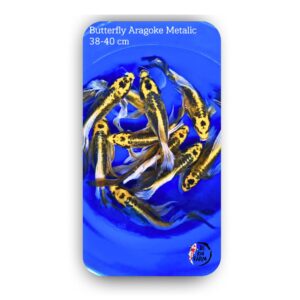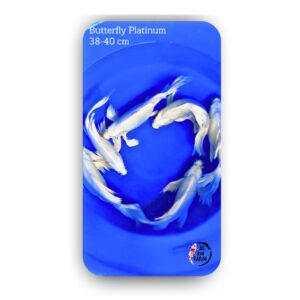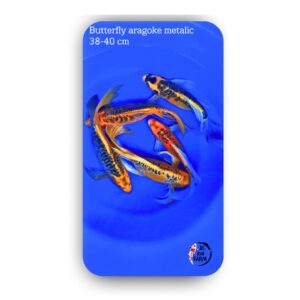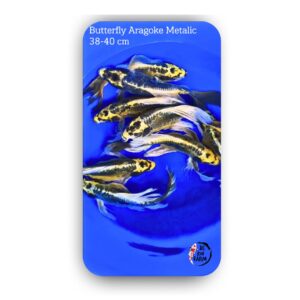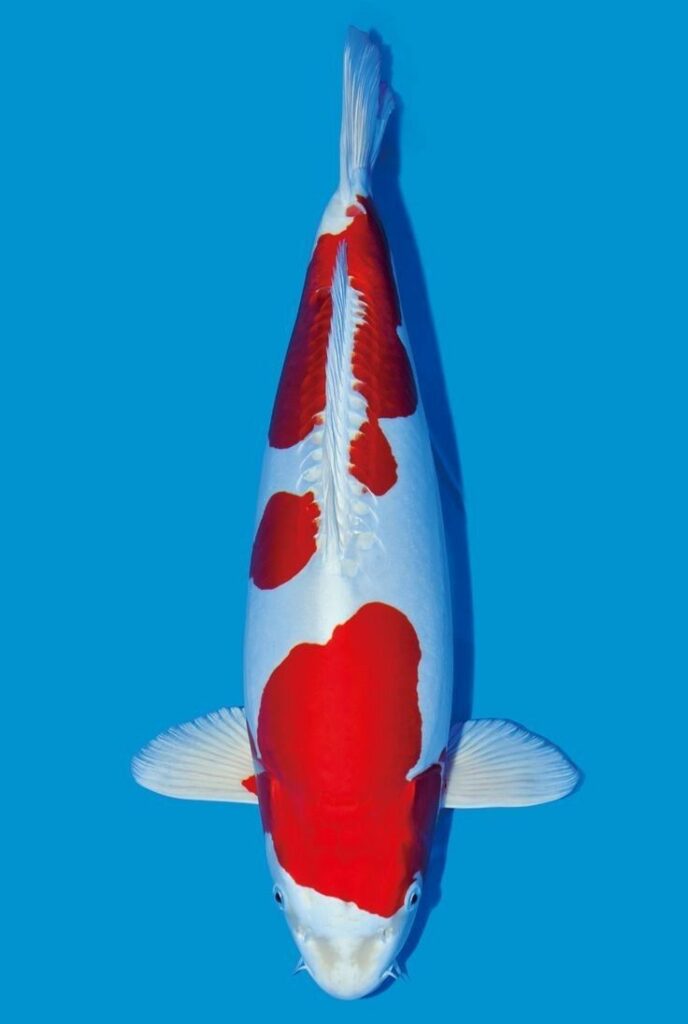
The Kikusui koi is basically the Doitsu version of the Hariwake koi which is a two-tone metallic koi with a white base color and red, orange, or yellow patterns over the white. The Kikusui koi is also often described as the Doitsu Kohaku metallic koi because it is a scaleless white koi with red patterns over the white and a reflective sheen on the skin of the koi.
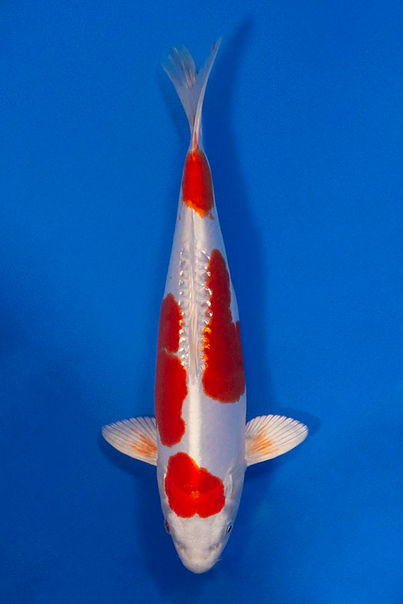
Kikusui is one of the lesser known koi varieties historically. It is unknown when Kikusui were first bred, but they have been well known in the koi keeping hobby for decades now, and the variety has made a name for itself at many major koi shows, especially in the last 15-20 years. Currently, there are several ways to breed Kikusui koi. Basically, Kohaku are bred with Platinum Ogon (a pure white metallic koi) to produce metallic Kohaku and then these metallic Kohaku are bred with Doitsu varieties to produce metallic koi, Doitsu Kohaku. However, to save time, many breeders combine the two steps into one by pairing Kohaku and Doitsu Platinum Ogon or by pairing Doitsu Kohaku and Platinum Ogon. Both methods produce good results with nearly the same quality of koi, but the preferred pairing is Doitsu Kohaku and Platinum Ogon koi. This is because there are many types of koi fish available, and therefore there are many good quality koi fish of this type. On the other hand, the Doitsu Platinum Ogon is a little less common so there are fewer good quality koi fish of this type to choose from for breeding.

When selecting Kikusui koi for your pond, there are many things to consider, starting with the pattern on the fish. Since Kikusui are closely related to Kohaku koi and share the same pattern, the general guidelines for the pattern are the same for both types of koi. First, the pattern should be evenly distributed across the body of the fish. An equal amount of color should be present on the left and right sides of the fish, as well as on the head and tail. The hi pattern should be evenly distributed across the available space, with no color appearing to dominate the other. Ideally, about 50% of the fish’s body should be covered with each color in an even distribution.
There are several different patterns that are acceptable on Kohaku koi and all of them are acceptable on Kikusui koi. In general, there is no particular pattern that is better or worse than another. Personal preference does play a big part here. Some of these patterns include the following:
Since Kikusui koi are a Doitsu variety, it is necessary to consider the quality of the Doitsu and assess the fish’s scales. Since the Doitsu variety has very few scales, the scales that are present are often rated very poorly. The fish should have scales along the lateral line of the body or along the spine of the fish, on either side of the dorsal fin. If the koi has scales anywhere else on the body or that are not aligned, it will usually be rated very poorly as it is considered a major imperfection.
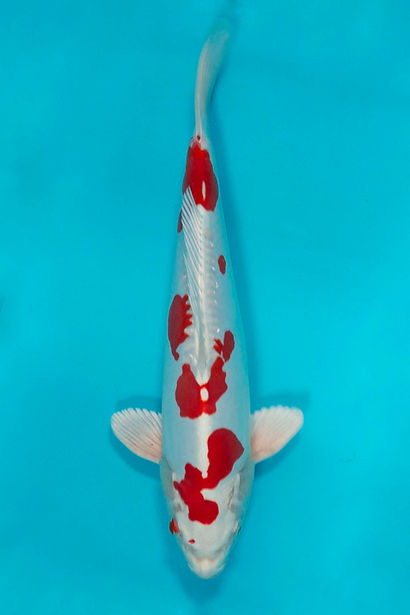
Overall, the Kikusui is a beautiful and stunning koi that really expands on the beauty of the classic Kohaku koi. The addition of the metallic skin and Doitsu scales allows the classic pattern to be taken to a whole new level. Make sure to have one in every hobbyist’s koi pond :))
